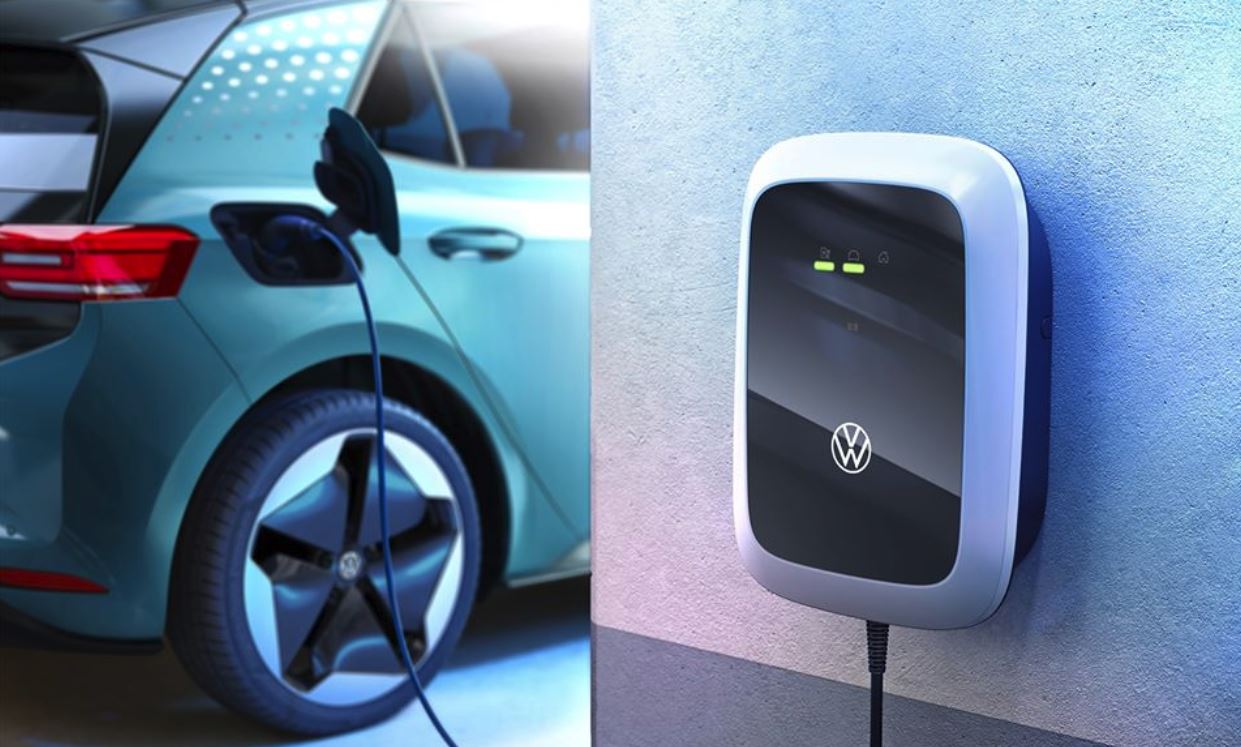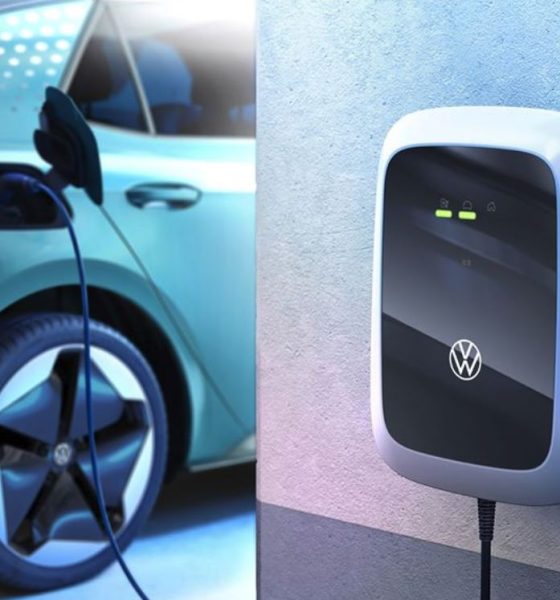

News
Tesla forces Volkswagen CEO to act fast and avoid similar fate as Nokia
Will automotive giant Volkswagen have the same fate as Finnish cellphone manufacturer Nokia? VW CEO Herbert Diess says that the carmaker is heading that way if it doesn’t do anything soon and quickly.
Even for a tried and tested automotive brand such as Volkswagen, things can be overwhelming. Frightening, in fact, if its chief executive compares it to a once-dominant phone brand that was not able to keep up with the times.
Germany who wants to switch to greener vehicles and lower its emissions footprint implemented tighter rules following Volkswagen’s admission in 2015 that it cheated with emission tests. The “Dieselgate” problem though is just the tip of the iceberg. The carmaker has no choice but to comply with the stringent guidelines and needs to develop electric vehicles and this requires the company to revamp its assets, cut costs, and catch up with needed technologies.
“The big question is: Are we fast enough? If we continue at our current speed, it is going to be very tough. In summary, this is probably the most difficult challenge Volkswagen has ever faced,” Deiss told his senior managers during a global board meeting as reported by Reuters.
Last September, the environment committee of the European parliament pushed to cut carbon dioxide emissions by 45 percent from 2021 through 2030 and to have 20 percent quota of electric vehicles come 2025 and by 50 percent in 2030. If Volkswagen misses these quotas in 2021, PA Consulting firm estimates that Volkswagen might face a fine of as much as 4.5 billion euros.
Just like what Diess emphasized, it is not an easy task and the brand needs to improve its productivity and lower its costs. It’s a massive overhaul that will push the German carmaker to refocus so they can produce EVs and batteries to comply with set emission rules and while keeping profit margins.
Analysts from consulting firm Wood Mackenzie predicts that Volkswagen could be the biggest EV manufacturer by 2030, producing 14 to 16 million green cars. However, this will be a long shot since Volkswagen would need to take a 53 percent share of the global market for electric cars from now and through the next eight years. It also needs to produce about 57 percent of battery packs for EVs.
There’s another problem for Volkswagen. One that might force them to be a Nokia — Tesla.
Tesla has been pushing the right buttons across markets. It became the most valuable car brand in the world eclipsing other American automotive predecessors and has been converting naysayers to believers of late.
The Silicon Valley-based electric car manufacturer has set its foot on Volkwagen’s backyard. It’s moving fast to start building its Gigafactory 4 in Brandenburg that will produce 150,000 EVs initially and will eventually ramp up to 500,000 units per year. Once Model Ys and Model 3s roll out of GF4, it will surely bite a good chunk of Volkswagens market share in Germany and the rest of the region. Tesla would have thrown a ton of punches to knockdown (or knockout) Volkswagen and other German car brands before they even know it. Elon Musk and his team already have the technologies to dominate the EV market.
Likewise, Tesla has established a strong presence in China with its Gigafactory 3 in Shanghai and the Chinese government has been pouring its support to Tesla, seeing the brand as a catalyst for the EV industry. Recently, Tesla was able to cut the price of locally-made Model 3s and the mass-produced sedan will most likely be a cash cow for Musk’s car brand. It has also pushed the gear to design Chinese-style Teslas, perhaps entry-level cars that it needs to even get a better share of the pie. And as the Tesla chief said, these cars will not be only for China but for the rest of the globe.
If Volkswagen doesn’t want to be a Nokia, it has to be smart and lightning-quick to catch and outplay Tesla in a game that the latter knows by heart. Volkswagen has no room to commit errors in the EV game. But for now, Tesla is in a very strong position and Deiss and the rest of his team can only look and scratch their heads.

Elon Musk
Elon Musk’s X will start using a Tesla-like software update strategy
The initiative seems designed to accelerate updates to the social media platform, while maintaining maximum transparency.

Elon Musk’s social media platform X will adopt a Tesla-esque approach to software updates for its algorithm.
The initiative seems designed to accelerate updates to the social media platform, while maintaining maximum transparency.
X’s updates to its updates
As per Musk in a post on X, the social media company will be making a new algorithm to determine what organic and advertising posts are recommended to users. These updates would then be repeated every four weeks.
“We will make the new 𝕏 algorithm, including all code used to determine what organic and advertising posts are recommended to users, open source in 7 days. This will be repeated every 4 weeks, with comprehensive developer notes, to help you understand what changed,” Musk wrote in his post.
The initiative somewhat mirrors Tesla’s over-the-air update model, where vehicle software is regularly refined and pushed to users with detailed release notes. This should allow users to better understand the details of X’s every update and foster a healthy feedback loop for the social media platform.
xAI and X
X, formerly Twitter, has been acquired by Elon Musk’s artificial intelligence startup, xAI last year. Since then, xAI has seen a rapid rise in valuation. Following the company’s the company’s upsized $20 billion Series E funding round, estimates now suggest that xAI is worth tens about $230 to $235 billion. That’s several times larger than Tesla when Elon Musk received his controversial 2018 CEO Performance Award.
As per xAI, the Series E funding round attracted a diverse group of investors, including Valor Equity Partners, Stepstone Group, Fidelity Management & Research Company, Qatar Investment Authority, MGX, and Baron Capital Group, among others. Strategic partners NVIDIA and Cisco Investments also continued support for building the world’s largest GPU clusters.
News
Tesla FSD Supervised wins MotorTrend’s Best Driver Assistance Award
The decision marks a notable reversal for the publication from prior years, with judges citing major real-world improvements that pushed Tesla’s latest FSD software ahead of every competing ADAS system.

Tesla’s Full Self-Driving (Supervised) system has been named the best driver-assistance technology on the market, earning top honors at the 2026 MotorTrend Best Tech Awards.
The decision marks a notable reversal for the publication from prior years, with judges citing major real-world improvements that pushed Tesla’s latest FSD software ahead of every competing ADAS system. And it wasn’t even close.
MotorTrend reverses course
MotorTrend awarded Tesla FSD (Supervised) its 2026 Best Tech Driver Assistance title after extensive testing of the latest v14 software. The publication acknowledged that it had previously criticized earlier versions of FSD for erratic behavior and near-miss incidents, ultimately favoring rivals such as GM’s Super Cruise in earlier evaluations.
According to MotorTrend, the newest iteration of FSD resolved many of those shortcomings. Testers said v14 showed far smoother behavior in complex urban scenarios, including unprotected left turns, traffic circles, emergency vehicles, and dense city streets. While the system still requires constant driver supervision, judges concluded that no other advanced driver-assistance system currently matches its breadth of capability.
Unlike rival systems that rely on combinations of cameras, radar, lidar, and mapped highways, Tesla’s FSD operates using a camera-only approach and is capable of driving on city streets, rural roads, and freeways. MotorTrend stated that pure utility, the ability to handle nearly all road types, ultimately separated FSD from competitors like Ford BlueCruise, GM Super Cruise, and BMW’s Highway Assistant.
High cost and high capability
MotorTrend also addressed FSD’s pricing, which remains significantly higher than rival systems. Tesla currently charges $8,000 for a one-time purchase or $99 per month for a subscription, compared with far lower upfront and subscription costs from other automakers. The publication noted that the premium is justified given FSD’s unmatched scope and continuous software evolution.
Safety remained a central focus of the evaluation. While testers reported collision-free operation over thousands of miles, they noted ongoing concerns around FSD’s configurable driving modes, including options that allow aggressive driving and speeds beyond posted limits. MotorTrend emphasized that, like all Level 2 systems, FSD still depends on a fully attentive human driver at all times.
Despite those caveats, the publication concluded that Tesla’s rapid software progress fundamentally reshaped the competitive landscape. For drivers seeking the most capable hands-on driver-assistance system available today, MotorTrend concluded Tesla FSD (Supervised) now stands alone at the top.
News
Elon Musk’s Grokipedia surges to 5.6M articles, almost 79% of English Wikipedia
The explosive growth marks a major milestone for the AI-powered online encyclopedia, which was launched by Elon Musk’s xAI just months ago.

Elon Musk’s Grokipedia has grown to an impressive 5,615,201 articles as of today, closing in on 79% of the English Wikipedia’s current total of 7,119,376 articles.
The explosive growth marks a major milestone for the AI-powered online encyclopedia, which was launched by Elon Musk’s xAI just months ago. Needless to say, it would only be a matter of time before Grokipedia exceeds English Wikipedia in sheer volume.
Grokipedia’s rapid growth
xAI’s vision for Grokipedia emphasizes neutrality, while Grok’s reasoning capabilities allow for fast drafting and fact-checking. When Elon Musk announced the initiative in late September 2025, he noted that Grokipedia would be an improvement to Wikipedia because it would be designed to avoid bias.
At the time, Musk noted that Grokipedia “is a necessary step towards the xAI goal of understanding the Universe.”
Grokipedia was launched in late October, and while xAI was careful to list it only as Version 0.1 at the time, the online encyclopedia immediately earned praise. Wikipedia co-founder Larry Sanger highlighted the project’s innovative approach, noting how it leverages AI to fill knowledge gaps and enable rapid updates. Netizens also observed how Grokipedia tends to present articles in a more objective manner compared to Wikipedia, which is edited by humans.
Elon Musk’s ambitious plans
With 5,615,201 total articles, Grokipedia has now grown to almost 79% of English Wikipedia’s article base. This is incredibly quick, though Grokipedia remains text-only for now. xAI, for its part, has now updated the online encyclopedia’s iteration to v0.2.
Elon Musk has shared bold ideas for Grokipedia, including sending a record of the entire knowledge base to space as part of xAI’s mission to preserve and expand human understanding. At some point, Musk stated that Grokipedia will be renamed to Encyclopedia Galactica, and it will be sent to the cosmos.
“When Grokipedia is good enough (long way to go), we will change the name to Encyclopedia Galactica. It will be an open source distillation of all knowledge, including audio, images and video. Join xAI to help build the sci-fi version of the Library of Alexandria!” Musk wrote, adding in a later post that “Copies will be etched in stone and sent to the Moon, Mars and beyond. This time, it will not be lost.”








